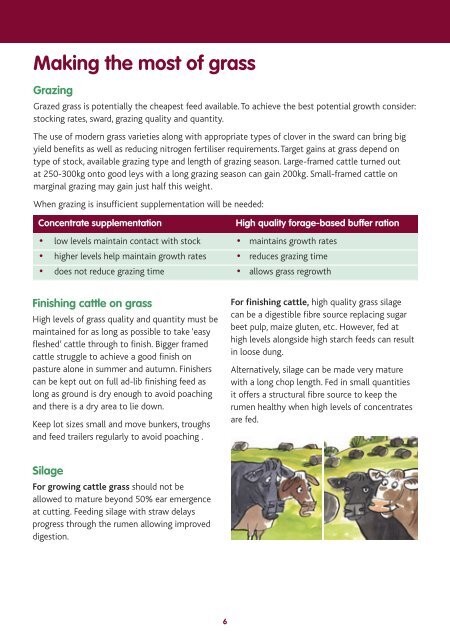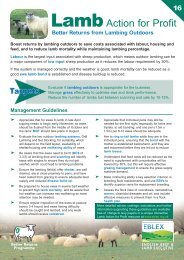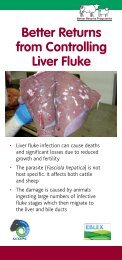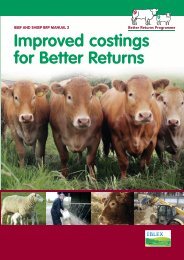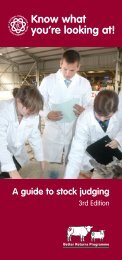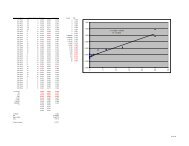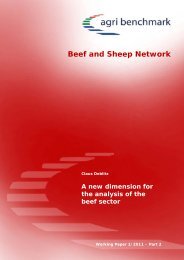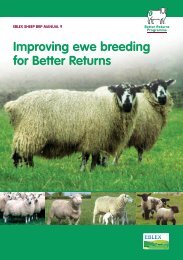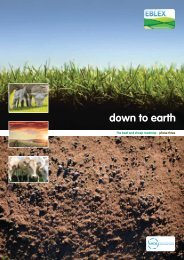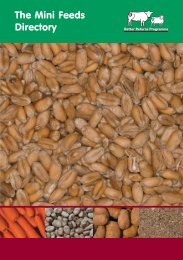Feeding growing and finishing cattle for Better Returns manual - Eblex
Feeding growing and finishing cattle for Better Returns manual - Eblex
Feeding growing and finishing cattle for Better Returns manual - Eblex
Create successful ePaper yourself
Turn your PDF publications into a flip-book with our unique Google optimized e-Paper software.
Making the most of grassGrazingGrazed grass is potentially the cheapest feed available. To achieve the best potential growth consider:stocking rates, sward, grazing quality <strong>and</strong> quantity.The use of modern grass varieties along with appropriate types of clover in the sward can bring bigyield benefits as well as reducing nitrogen fertiliser requirements. Target gains at grass depend ontype of stock, available grazing type <strong>and</strong> length of grazing season. Large-framed <strong>cattle</strong> turned outat 250-300kg onto good leys with a long grazing season can gain 200kg. Small-framed <strong>cattle</strong> onmarginal grazing may gain just half this weight.When grazing is insufficient supplementation will be needed:Concentrate supplementationHigh quality <strong>for</strong>age-based buffer ration• low levels maintain contact with stock • maintains growth rates• higher levels help maintain growth rates • reduces grazing time• does not reduce grazing time • allows grass regrowthFinishing <strong>cattle</strong> on grassHigh levels of grass quality <strong>and</strong> quantity must bemaintained <strong>for</strong> as long as possible to take ‘easyfleshed’ <strong>cattle</strong> through to finish. Bigger framed<strong>cattle</strong> struggle to achieve a good finish onpasture alone in summer <strong>and</strong> autumn. Finisherscan be kept out on full ad-lib <strong>finishing</strong> feed aslong as ground is dry enough to avoid poaching<strong>and</strong> there is a dry area to lie down.Keep lot sizes small <strong>and</strong> move bunkers, troughs<strong>and</strong> feed trailers regularly to avoid poaching .For <strong>finishing</strong> <strong>cattle</strong>, high quality grass silagecan be a digestible fibre source replacing sugarbeet pulp, maize gluten, etc. However, fed athigh levels alongside high starch feeds can resultin loose dung.Alternatively, silage can be made very maturewith a long chop length. Fed in small quantitiesit offers a structural fibre source to keep therumen healthy when high levels of concentratesare fed.SilageFor <strong>growing</strong> <strong>cattle</strong> grass should not beallowed to mature beyond 50% ear emergenceat cutting. <strong>Feeding</strong> silage with straw delaysprogress through the rumen allowing improveddigestion.6


